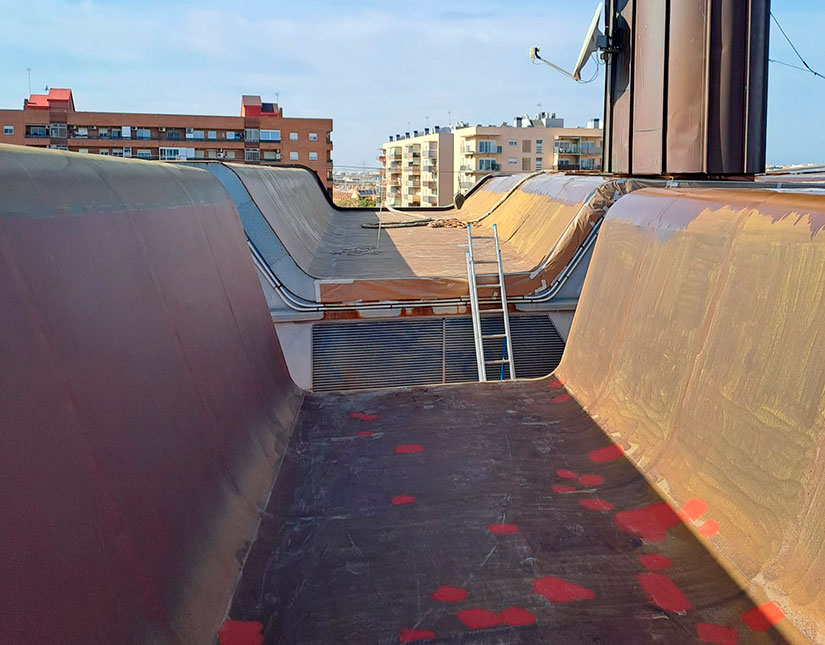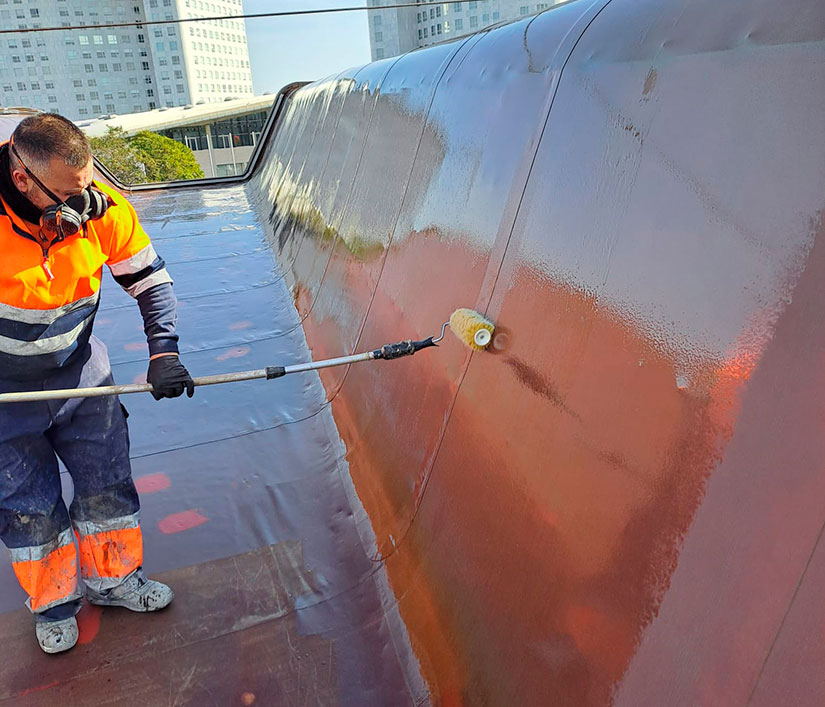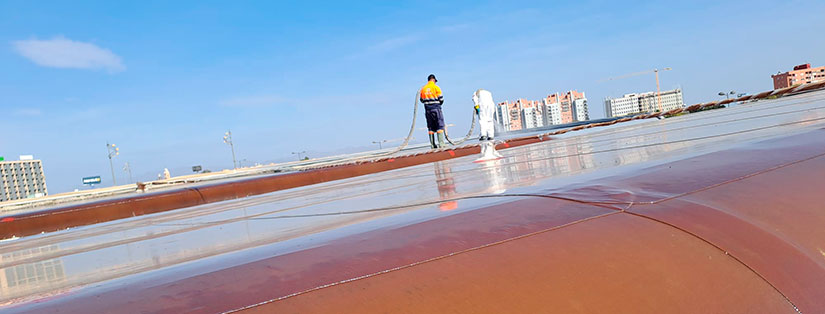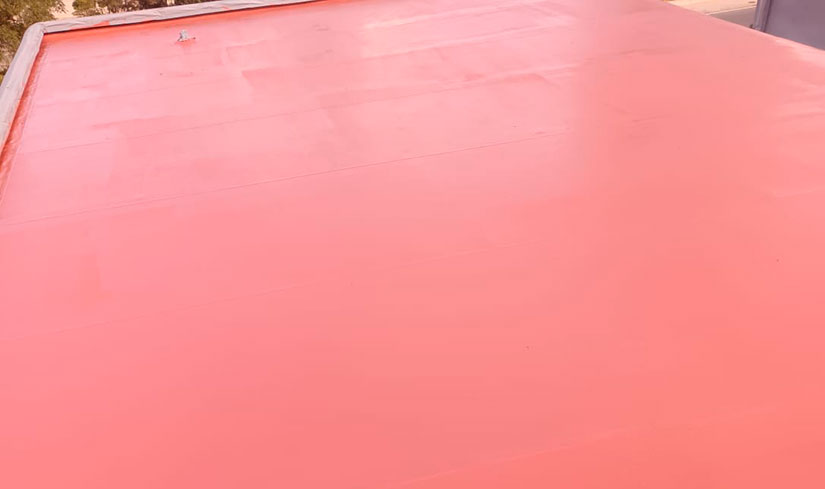POLYUREA ON PVC IN THIS INDUSTRIAL WAREHOUSE
An old roof waterproofed with sheeting that is leaking is a major challenge for any waterproofing project. Detecting the source of a leak in a system that is not fully adhered to the substrate and with many points of discontinuity due to welded areas between sheets can be a complicated and laborious process, involving many hours of work to find the source of the problem. Trial and error methods to resolve these leaks are often ineffective, as temporary patching only postpones the problem until a new leak appears in another area.


Re-waterproofing the entire surface is generally the most effective solution in these cases. Traditionally, this would involve either the complete replacement of the film over the existing one or the removal of the old system and the application of a new one, which would entail significant costs, time and the generation of a large amount of waste material, as well as the inconvenience to the client due to the noise and dust generated. However, liquid systems, whether polyurea or polyurethane based, offer a much cleaner, faster and more efficient solution. These materials adhere extremely strongly to practically all surfaces and adapt to any shape, reaching all nooks and crannies. This allows a modern and efficient waterproofing system to be applied over the existing old system. This method does not add significant weight to the structure and offers the same waterproofing guarantees as an application on a new substrate.
In one particular case, an 1800 m² industrial building that had an apparently sound but leaking PVC sheet system was re-waterproofed. The process involved the application of a Primer PU-1050 primer, followed by Tecnocoat H-2049 polyurea waterproofing membrane and TecnoTop 2C aliphatic coating. This combination of products ensures robust adhesion and durable weather protection. Adhesion tests showed spectacular results, with the membrane firmly bonded over the entire surface, guaranteeing a continuous and complete watertightness.
The result is a completely renovated and watertight roof, which not only improves protection against water ingress, but also extends the service life of the structure. The use of polyurea or polyurethane systems not only saves time and costs compared to traditional methods, but also offers additional safety and a high quality finish. This case study demonstrates how re-waterproofing with liquid systems can be an efficient and effective solution to complex filtration problems on industrial roofs.







